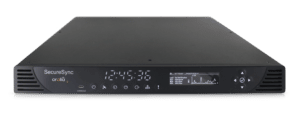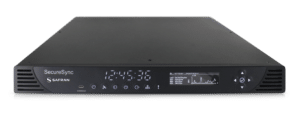Epsilon Switch & Amplifier System
SAS-17E/36E Switch & Amplifier System
SAS-ESignal Amplifer and Switch With Ethernet Interface is a high performance, highly manageable and reliable solution for distributing time and frequency signals for satcom, digital TV or audio broadcast, microwave links, satellite ground stations applications.
The Epsilon™ Switch and Amplifier System (SAS-E) provides a cost effective way to extend distribution of time and frequency signals (pulse, low phase noise frequency signal, Time of Day), as a signal amplifier. Thanks to analog amplification, SAS-E adds very little phase noise to the input frequency and ensures high RF isolation. It is therefore suitable for reference frequency distribution towards transmitters, up-converters, micro-wave links. Pulse regeneration is transparent to pulse duration and period: SAS-E is therefore suitable for distribution of any pulse encoded signal like 1 pps, DCLS IRIG, etc.
ADVANTAGES
-
Tailored For Broadcast
-
Redundant & Low Phase Noise
REQUEST A QUOTE
FEATURES
- Large signal distribution
- Frequency signal (1 to 16 MHz range)
- 1PPS/DCLS TTL
- Serial time code message (ToD) (RS-232 serial line)
- Customization available
- Very low additional phase noise
- Redundant source monitoring
- Fast switching
- External clock status (relay contact)
- Remote management by SNMP/HTTP through Ethernet port
SPECS
- AC Power Supply: 100 to 240 V / 48 to 63 Hz
- DC Power Supply: 24 to 48 V / -24 to -48 Hz
- Size: 19″ 1 U unit (483 x 340 x 44 mm)
- Environmental
- Operating temperature: –5° to 55°
- Relative humidity: 95% RH @ 40°C, non-condensing
- Pulse
- TTL level pulsed signal:
- Frequency up to 10 kHz
- Pulse width between 1 µs and 500 ms
- BNC 50 Ω
- 1 Pulse Per Second (1 PPS)
- Unmodulated IRIG B



